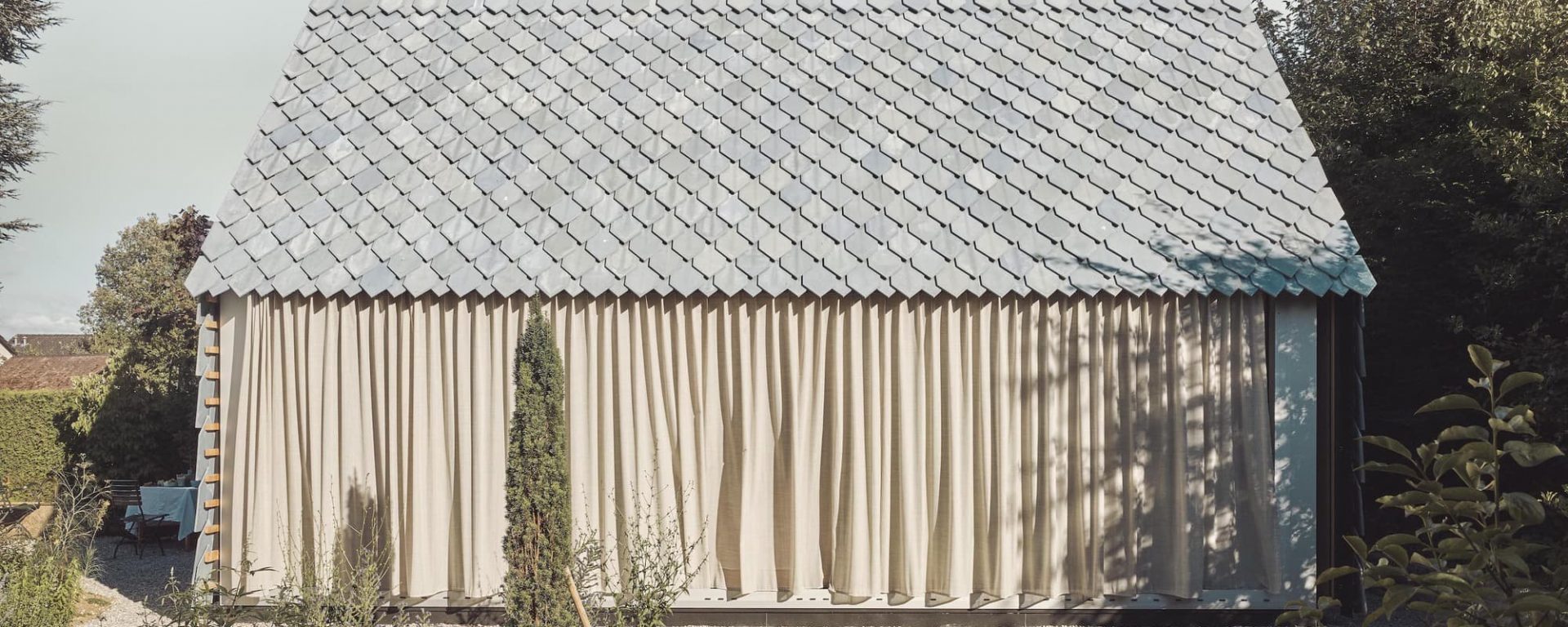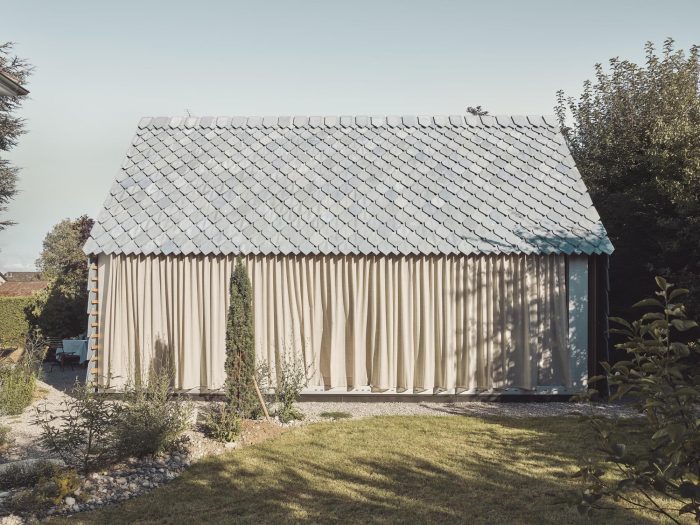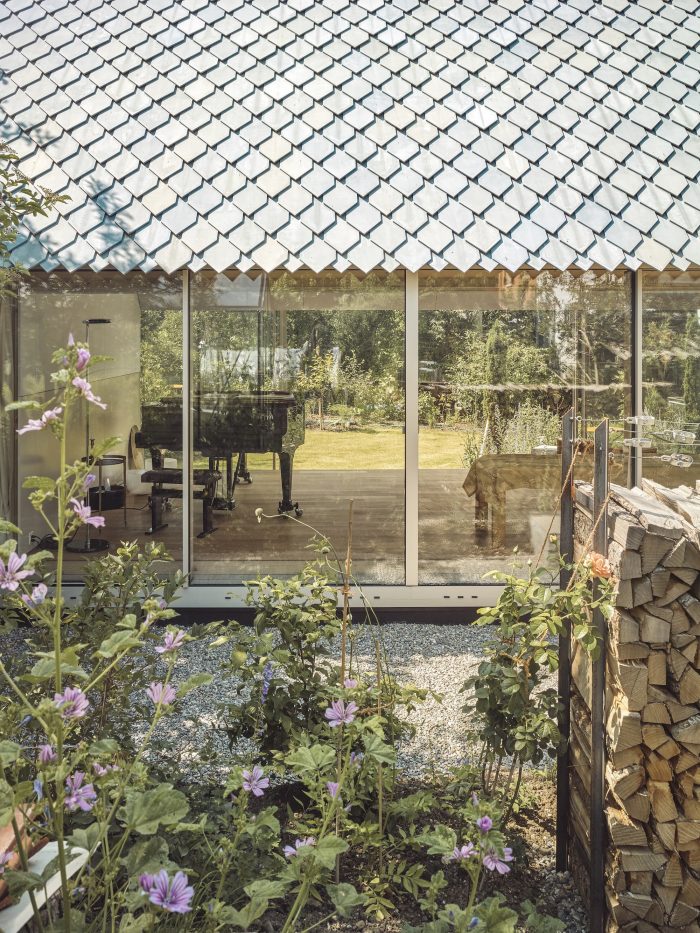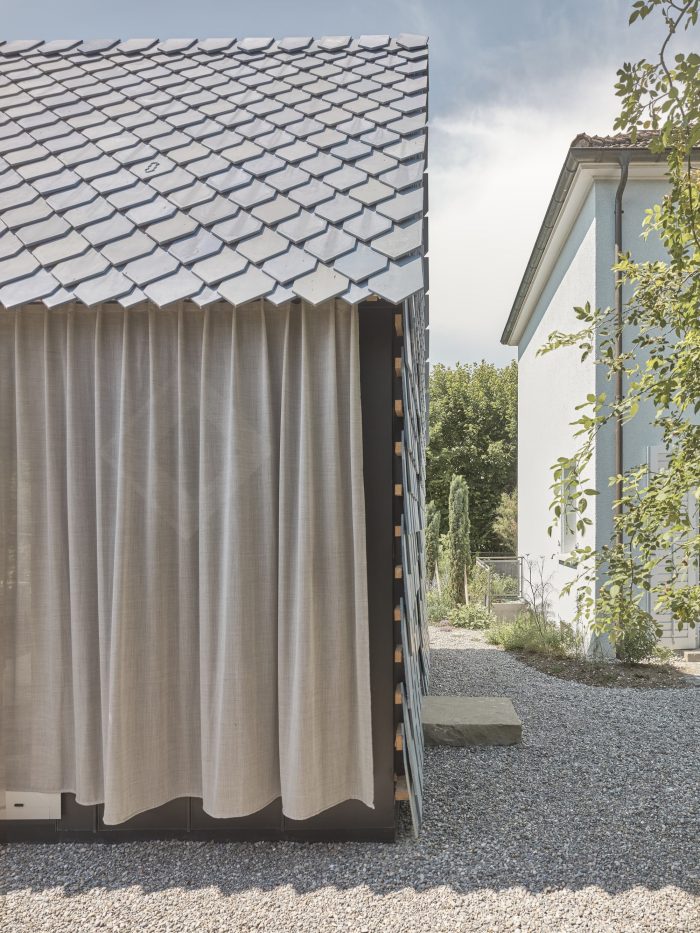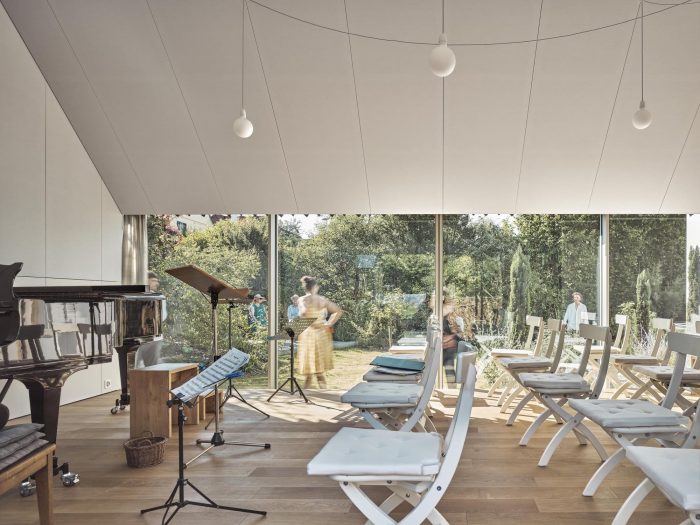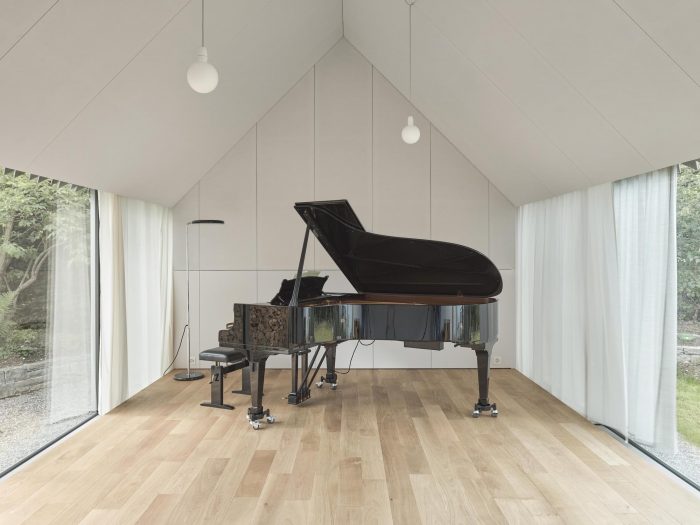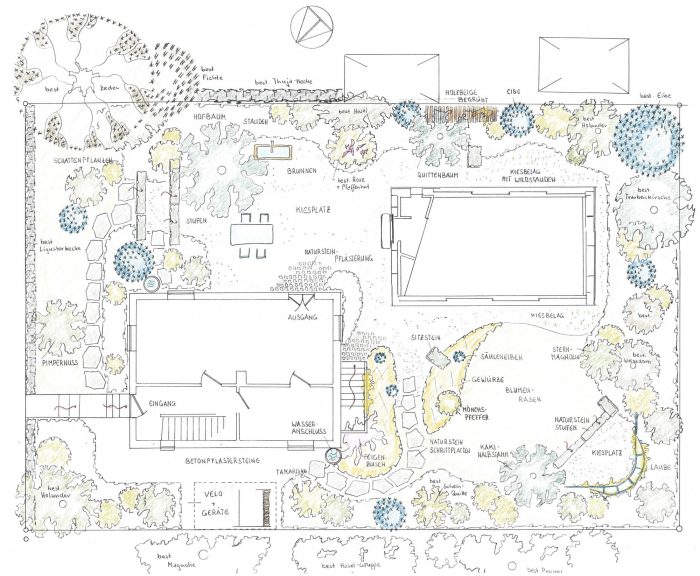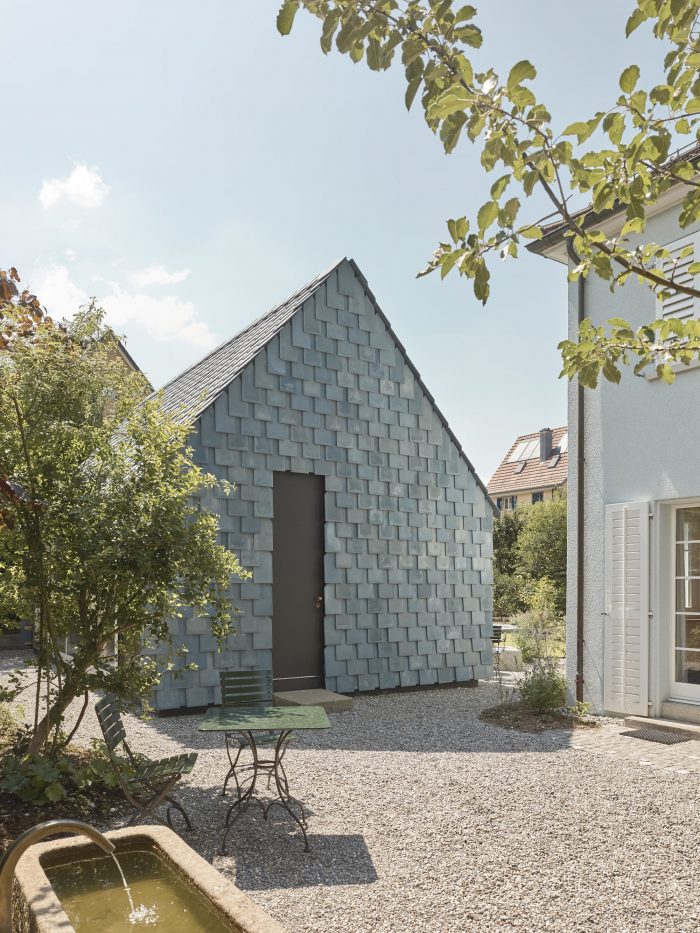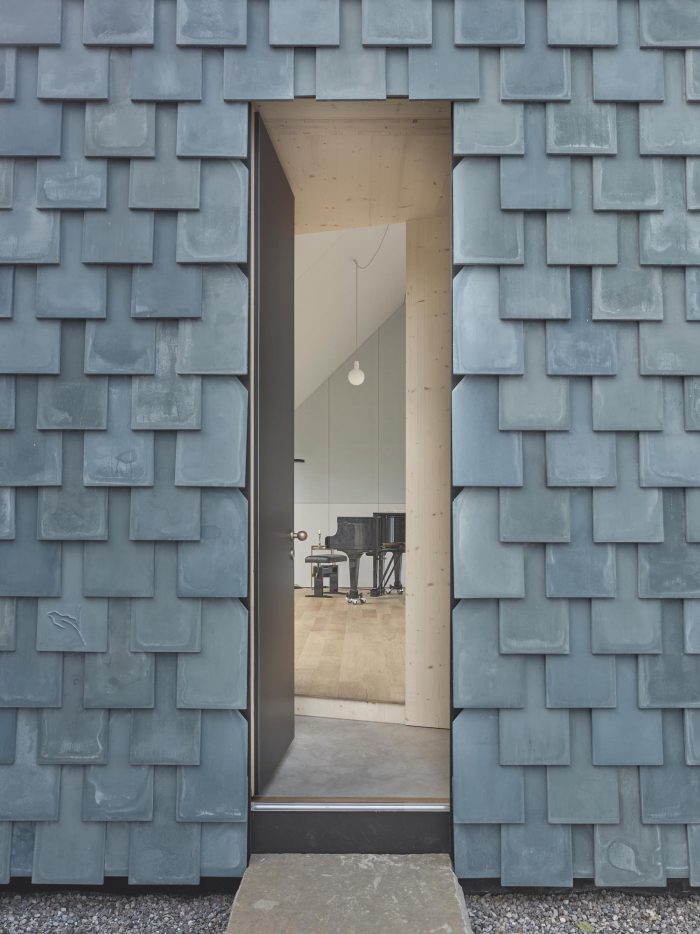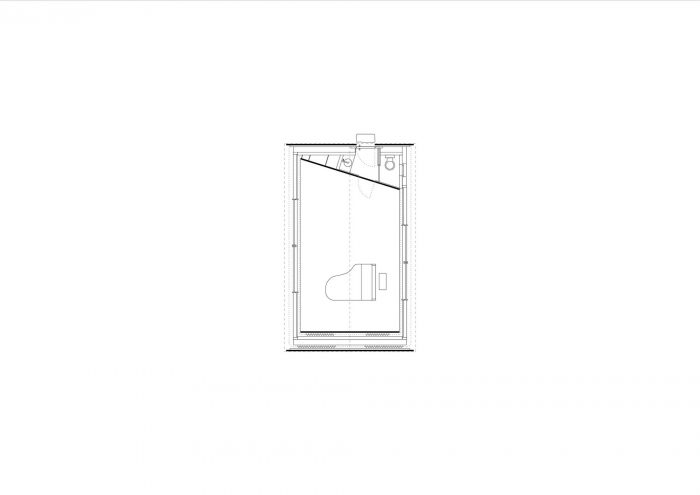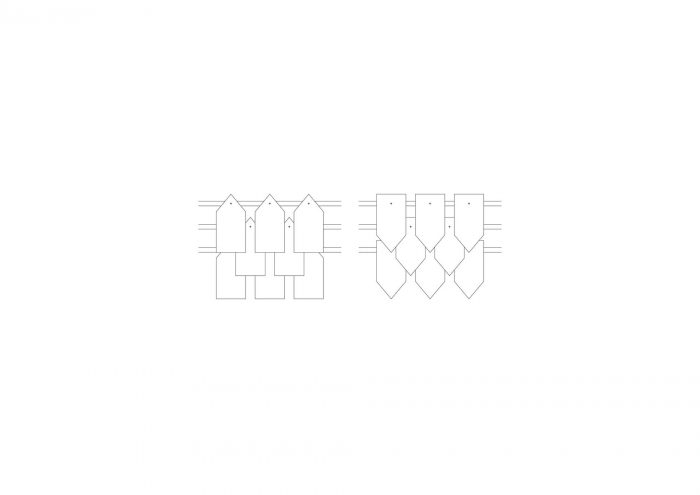一位钢琴家要求我们想象一个完全用于音乐的空间,在那里她可以练习和教学:一个安静而神奇的空间,作为她在瑞士温特图尔镇美丽花园的一个组成部分。 这个单层的音乐亭矗立在一个简单的混凝土基座上。墙壁和倾斜的屋顶都是用12厘米厚的交叉层压木板建造的–几乎就像一个纸板模型。陡峭的坡屋顶靠在墙的两端,并沿着屋檐浮动,以使房间完全向花园开放。
A pianist asked us to imagine a space entirely dedicated to music, where she can practice and teach: a quiet and magical space as an integral part of her beautiful garden in the Swiss town of Winterthur. The single-story music pavilion stands on a simple concrete base. Both, the walls and the pitched roof, are constructed with 12cm thick cross-laminated timber panels – almost like a cardboard model. The steep gable roof rests on both ends of the walls and floats along the eaves in order to completely open the room towards the garden.
整个建筑被厚厚的水泥纤维板连续覆盖,在21种不同的蓝色色调中闪闪发光。锯齿状的外墙是与建筑事务所SVNM合作开发的,并在我们许多朋友的支持下安装。
The entire building is covered with a continuous dress of thick cement fiber boards, which shimmer in 21 different shades of blue. The shingled facade was developed in collaboration with the architectural office SVNM and installed with the support of many of our friends.
一个带有入口、厕所和储藏空间的服务室层,隐藏在朝向庭院的坡屋顶外墙的厚度中。这使得音乐馆可以独立于住宅楼使用。在这个中间层,外壳的材料被暴露出来:混凝土底座和交叉层压木板的新鲜松木变得可见。
A service room layer, with an entrance, a toilet, and storage space, is hidden in the thickness of the gabled facade towards the courtyard. This allows the music pavilion to be used independently of the residential building. In this intermediate layer, the materials of the shell are exposed: the concrete base and the fresh pinewood of the cross-laminated timber panels become visible.
从入口处,一个小台阶通向音乐室,音乐室本身设计简单,并在纵向两边完全向花园开放。白色的木质和纺织品表面反映了周围的绿色和蓝色的光线。高高的屋檐为声音的展开提供了足够的容积,并且仍然给音乐家们一种庇护的感觉,因为它沿着屋檐几乎伸到眼睛的高度。
From the entrance, a small step leads to the music room, which in itself is designed with simple means, and completely opens up towards the garden on both longitudinal sides. The white wooden and textile surfaces reflect the green and blue light of the surroundings. The high gable roof provides enough volume for the sound to unfold and still gives the musicians a feeling of shelter as it reaches down along the eaves almost to eye level.
音乐馆的出色声学效果归功于由透声织物制成的墙壁和天花板,它覆盖了一个带有吸收和反射元素的声学层。
The music pavilion owes its excellent acoustics to the walls and ceilings made of sound-permeable fabric which covers an acoustic layer with absorbing and reflecting elements.
为音乐建造一个空间是最美丽的任务之一,因为声音是我们建筑师的盟友。它需要大量的空气来膨胀,并且对空间的表面很敏感。为了与他人分享这种经验,钢琴家开始了一个小型的系列音乐会,名为 “Pavillon Bleu”。
Building a space for music is one of the most beautiful tasks since sound is an ally to us architects: It needs plenty of air to expand and is sensitive to the surfaces of a space. In order to share this experience with others, the pianist started a small concert series called “Pavillon Bleu”.
 Architects: Atelier Void, Lorenz Bachmann
Architects: Atelier Void, Lorenz Bachmann
Area : 42 m²
Year : 2020
Photographs :Lukas Murer
Lead Architects : Georg Bachmann, Lorenz Bachmann
Acoustics : Applied acoustics
Project Manager : Jürg Weidmann
Landscape Architecture : Grünbart
Engineering Consulting : Holzbaubüro Reusser
Cooperation Facade & Manufacture Cement Fiber Boards : Solanellas Van Noten Meister
General Contractor : Zehnder Holz & Bau
City : Winterthur
Country : Switzerland

